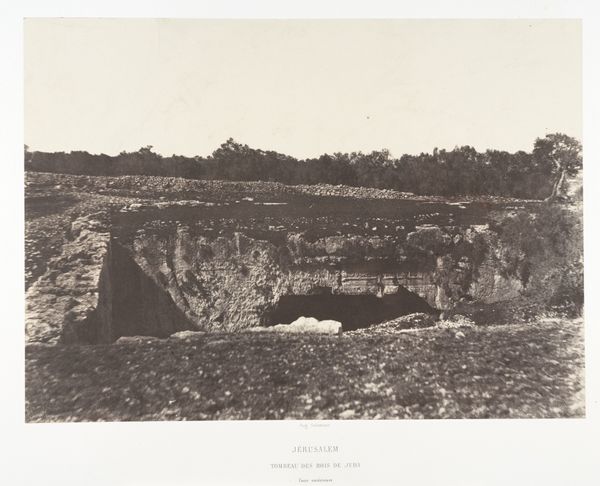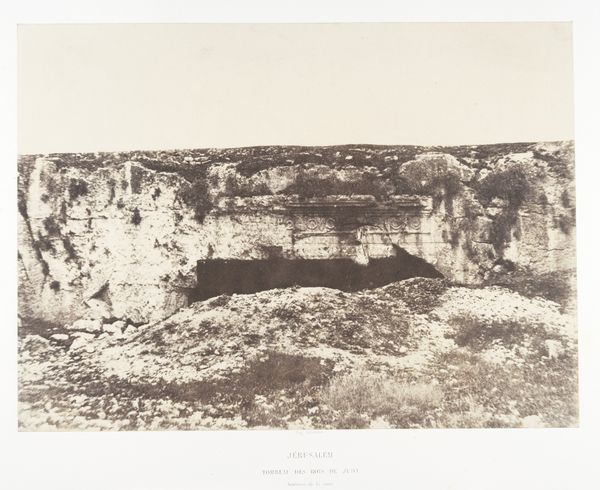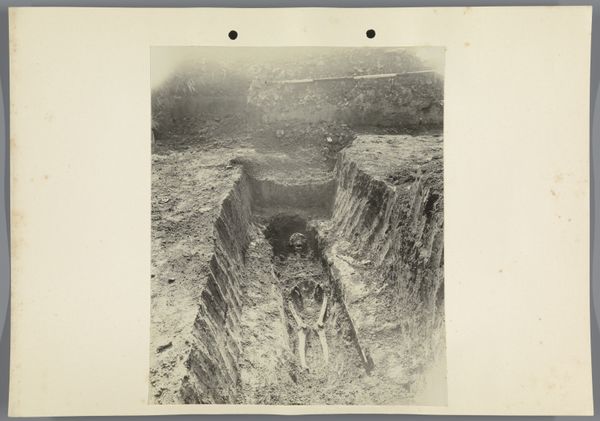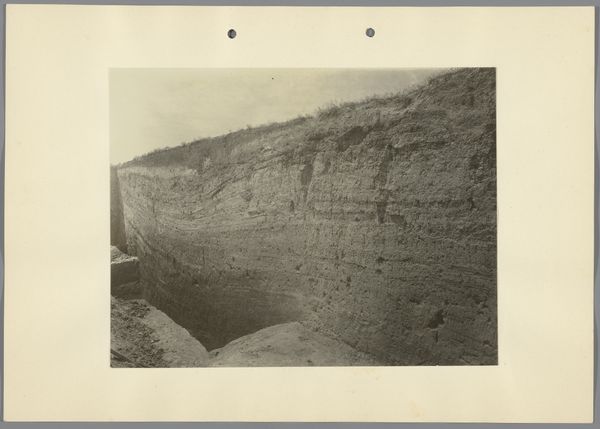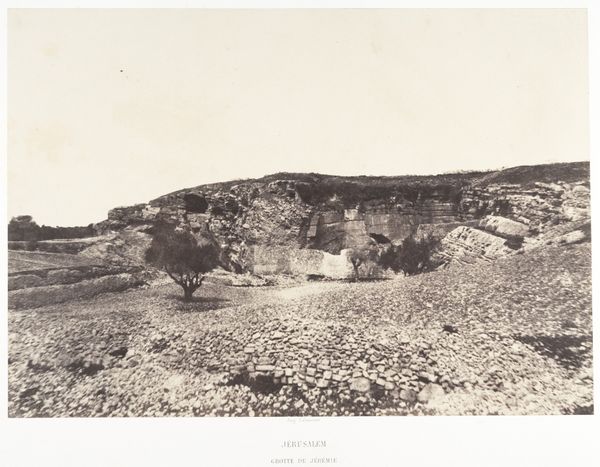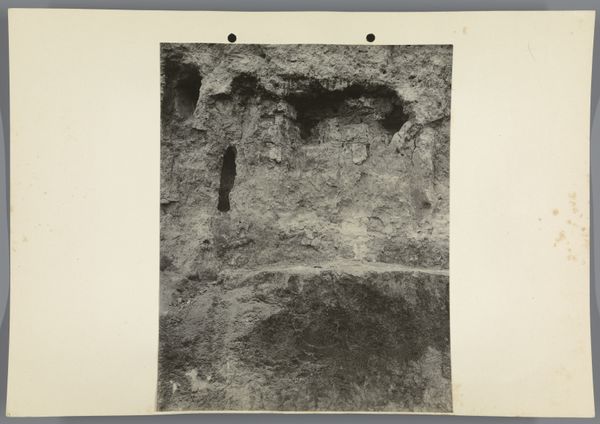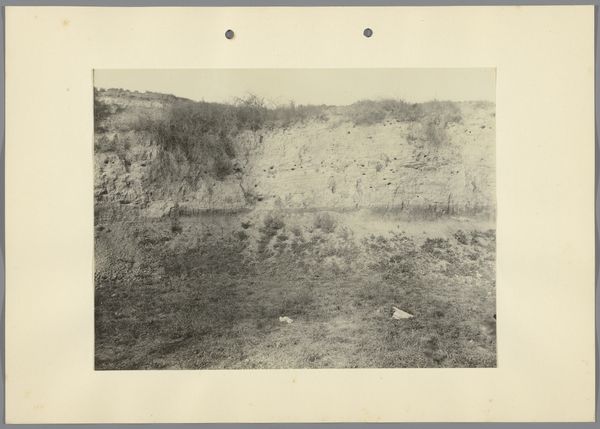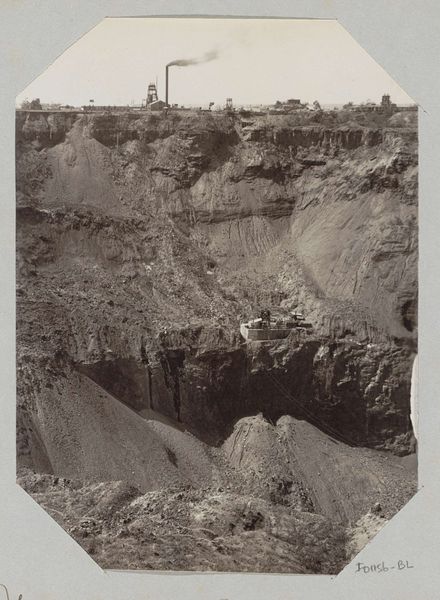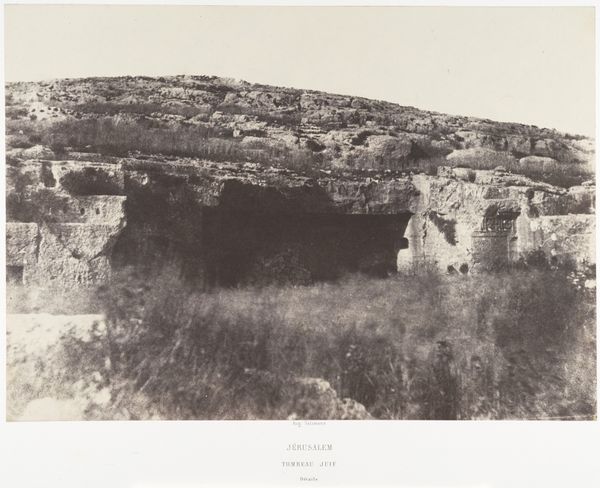
print, photography, site-specific
# print
#
landscape
#
photography
#
ancient-mediterranean
#
site-specific
#
realism
Dimensions: Image: 10 13/16 × 8 3/8 in. (27.5 × 21.2 cm) Mount: 17 15/16 × 23 1/4 in. (45.5 × 59 cm)
Copyright: Public Domain
Curator: What an evocative scene. This is Louis de Clercq's photograph, "Jérusalem. (Environs) Tombeau des Rois," created around 1860. It currently resides in the Metropolitan Museum of Art. Editor: It feels immediately desolate, doesn't it? The stark tonality, the crumbling earth... it speaks volumes about mortality and forgotten power. The composition, though simple, is effective. That strong horizontal division created by the cut of earth—powerful. Curator: De Clercq was meticulous in his approach. This photograph, part of a larger project documenting the Near East, used the calotype process, which involved creating a paper negative. Think about the labor involved, the precise chemical processes… These early photographic expeditions were incredibly complex undertakings. Editor: Precisely. The materiality of the calotype lends itself well to this subject. The somewhat blurred quality, that almost painterly softness… it emphasizes the timelessness of the landscape. Notice how the artist captures the stark contrasts within the frame and a somber almost melancholic mood overtakes its composition. Curator: The social context is key, too. In the mid-19th century, there was a surge of interest in archaeological sites, fueled by colonial ambitions and a desire to understand biblical history. Photography played a crucial role in documenting and disseminating these discoveries to a wider audience. We’re participating in that viewing practice again, decades later. Editor: The structure of the tomb itself also draws you in, a kind of receding darkness, offering a physical depiction of an ending. Also consider the composition elements used and the balance in thirds the photograph contains. It is, however, softened considerably, no hard lines. De Clercq masterfully exploits light to carve the forms from a two dimensional space. Curator: Yes, and let's remember, these photographs weren't just objective records. De Clercq, consciously or unconsciously, shaped our understanding through the framing, the composition. Think about the labor needed, and even the equipment being carried and made for this type of commission or project. Editor: Ultimately, the interplay between decay and stillness is what captivates. There's a palpable tension between the visible, tangible remnants of human construction and the encroaching force of nature and time. The somber emotional overtone of it still impacts us, and how. Curator: Thinking about how this image was produced and what informed its construction in conjunction with its immediate emotive presence certainly provides new and meaningful avenues of thought when experiencing "Jérusalem. (Environs) Tombeau des Rois." Editor: Indeed, it is this marriage of formal consideration with an understanding of both past, place, and person that gives the artwork so much lasting presence.
Comments
No comments
Be the first to comment and join the conversation on the ultimate creative platform.
